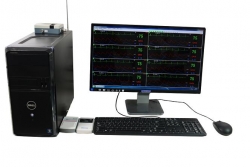Wechat QR code

TEL:400-654-1200

TEL:400-654-1200

Importance of ambulatory blood pressure monitoring
The status of ambulatory blood pressure monitoring (ABPM) in international guidelines has been rising. From the earliest NICE guidelines in Britain in 2011, ESC/ESH guidelines in 2013, Japanese guidelines in 2014 and Canadian guidelines in 2015, to August 2015, China has formulated the "Chinese Expert Consensus on the Clinical Application of Ambulatory Blood Pressure Monitoring". This expert consensus is a major innovation in the history of the development of ambulatory blood pressure monitoring technology for the diagnosis of hypertension. Meilun
Chinese experts have agreed on the indications of ambulatory blood pressure monitoring: (1) when blood pressure is increased in the clinic or at home, people suspected of "hypertension" will have higher fluctuation, normal or sometimes elevated blood pressure, or the average value of blood pressure measured for several times in the range of grade 1 or 2 hypertension, i.e. 140-179/90-109 mmHg;Meilun

(2) If two or more drugs are combined in sufficient quantity, the blood pressure of patients with hypertension diagnosed and treated by antihypertensive therapy still does not reach the standard, that is, the average value of blood pressure measured repeatedly is still more than 140/90 mmHg;
Mellon
(3) If the blood pressure of the patients who have been diagnosed with hypertension and have received antihypertensive treatment has reached the target, the mean blood pressure is less than 140/90 mmHg, but cardio-cerebrovascular complications, such as stroke, heart failure, myocardial infarction, renal insufficiency, or new target organ damage, such as proteinuria, left ventricular hypertrophy, lacunar infarction, or target organ damage, have occurred. Progressive aggravation.
(4) Without antihypertensive drugs, the blood pressure in the clinic was less than 140/90 mmHg, but the family blood pressure was more than 135/85 mmHg or 120-139/80-89 mmHg in the clinic. However, the target organs were damaged, such as proteinuria, left ventricular hypertrophy, lacunar cerebral infarction, and there were no other vascular risk factors such as diabetes and dyslipidemia.
For seasonal blood pressure changes, ambulatory blood pressure monitoring is also of great use. Consensus analysis: winter blood pressure is generally high, is the grasp of antihypertensive treatment, so it is necessary to take ambulatory blood pressure monitoring, effective control of blood pressure to meet the target organ damage, reduce target organ damage, summer blood pressure is more stable, often go to the hospital or clinic during the day to measure normal blood pressure, is it possible to stop taking drugs? No, in summer, blood pressure is often elevated at night, so it needs to be monitored by ambulatory blood pressure, because it can not be stopped at night, so ambulatory blood pressure monitoring is also very important in monitoring the false impression caused by seasonal blood pressure changes.
The diagnostic criteria for ambulatory blood pressure monitoring are as follows: 1. The diagnostic criteria for hypertension are 24-hour average systolic/diastolic blood pressure (> 130/80 mmHg), day (> 135/85 mmHg), or night (> 120/70 mmHg). 2. Comparing with the blood pressure in the clinic, the following diagnoses can be further established, including "white coat hypertension" in the patients who did not take the medicine (the blood pressure in the clinic is above 140/90 mmHg, while the blood pressure in the daytime and at night is normal 24 hours), and "hidden hypertension" (the blood pressure in the clinic is below 140/90 mmHg, while the blood pressure in the daytime or at night increases 24 hours), and "white coat uncontrolled hypertensive" in the patients undergoing antihypertensive treatment. Pressure (blood pressure criteria with untreated), and "hidden uncontrolled hypertension" (blood pressure criteria with untreated).
Although the cost of ambulatory blood pressure monitoring is a little higher than that of routine blood pressure monitoring, it can detect the end-point events caused by hypertension and hypertension in time. In the long-term effect, it can actually reduce medical expenditure.